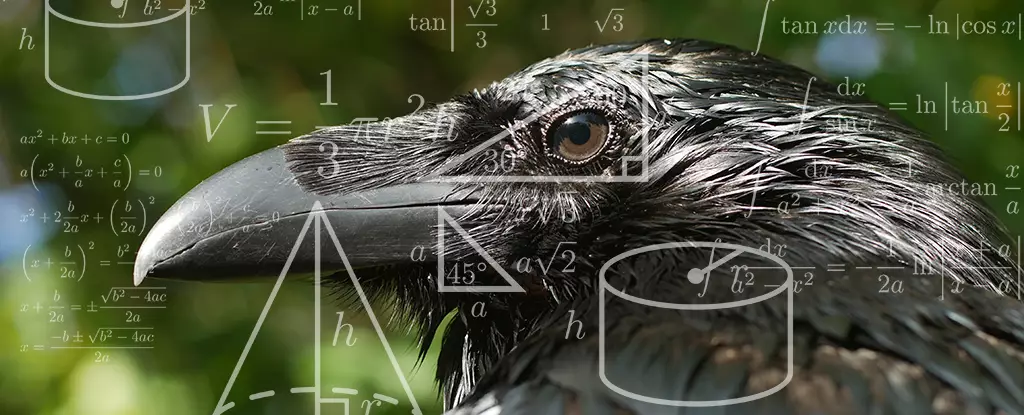For too long, the narrative surrounding intelligence in the animal kingdom has been dominated by the notion that humans stand alone in their cognitive capabilities. However, groundbreaking research is challenging this perception, illustrating that even creatures as humble as crows possess a remarkable sense of geometric intuition. The recent study unveiled that crows can identify the ‘odd one out’ in geometric arrays, transcending the simplistic view many hold of animal cognition. This revelation not only elevates crows into an unexpected realm of intellectual competency but also raises critical questions about our own place in the evolutionary hierarchy. Are we truly the apex of intelligence, or have we been blinded by anthropocentrism?
Nature’s Paradox: Crows and Regularity
The study conducted by Andreas Nieder and his team from the University of Tübingen meticulously examined the cognitive faculties of two male carrion crows. They demonstrated an impressive affinity for recognizing geometric regularity, revealing that these birds are not simply reacting to their environment but are engaging in complex cognitive tasks. This inclination towards structured shapes, like squares, over disordered forms like rhombuses, suggests an innate understanding that mirrors one of the cornerstones of human mathematics. This discovery indicates that cognitive behavior often attributed solely to humans might be a rudimentary trait shared across species—a biological endowment that has been underappreciated.
Interestingly, the study also touched upon how crows showed varying levels of competence depending on the geometric shapes presented. The more regular the shape, the better they excelled at spotting the intruder among their peers. However, when the tasks became convoluted with irregular forms, the crows struggled, highlighting a fascinating parallel to human reasoning: just as we grapple with complex mathematical problems or perplexing puzzles, so too do these birds face challenges in deciphering geometric nuances.
Simplicity Breeds Complexity
What truly astonishes is the implication of the crows’ geometric sensibilities. By demonstrating a capability to assess and differentiate geometric properties without structured training, crows emphasize the inherent, elemental nature of their intelligence. The idea that ‘core knowledge’ of magnitudes and geometry might possess roots in biological evolution bolsters the argument that cognitive diversity is not merely a human attribute but rather a trait that can flourish in various forms across species. This realization might force a reevaluation of how we understand intelligence itself; it becomes evident that simpler, ostensibly ‘less intelligent’ creatures can exhibit sophisticated cognitive skills when measured on applicable grounds.
Moreover, the findings underscore the evolutionary advantages derived from these intelligences. Crows’ ability to navigate complex spaces and recognize spatial regularities serves as a survival mechanism, potentially affording them greater capabilities for finding food, avoiding danger, and even engaging in social behaviors. In this light, the idea of intelligence as a purely human characteristic falls apart, revealing a more interconnected web of cognitive abilities that span across the animal kingdom.
The Anthropocentric Blind Spot
Amid these revelations, it is perplexing that society still clings to the outdated notion of a human-like intelligence as a pinnacle of evolution. This article joins the chorus of voices urging a shift in perspective. In a world that increasingly emphasizes conservation and biodiversity, acknowledging the cognitive richness of non-human creatures like crows could pave the way for a more respectful interaction with nature.
By relegating animals to a lower intellectual status, we not only undermine their capabilities but miss out on understanding the interconnected pathways of evolution that have led to the development of such intelligence. This could inform more effective conservation efforts and inspire us to rethink our responsibilities toward non-human life forms.
Ultimately, the study on crows serves not only as a tribute to their remarkable cognitive abilities but also as a clarion call to embrace a more nuanced understanding of intelligence—one that acknowledges the intricate web of life, where each creature, including our black-feathered friends, plays a crucial role in our collective ecosystem. In recognizing their intelligence, we expand our own understanding of what it means to be sentient beings. Crows, with their uncanny geometric feats, become emblematic of a broader narrative that shifts the focus from human superiority to one of shared existence and intellect.


Leave a Reply